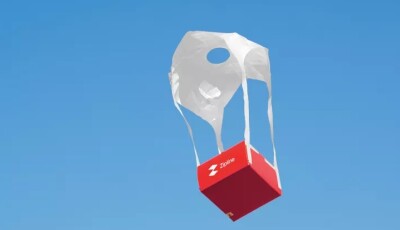Three drone-related companies and organizations have been named to the Popular Science “Best of What’s New” list for 2022 for their technological advances. The publication added Skydio, Zipline, and NASA’s Ames Research Center to its “100 greatest Innovations of 2022” listing for the ways their products and systems are “improving our lives.”
For the past 35 years, Popular Science has presented its “Best of What’s New” awards. The list includes innovations from fields such as aerospace, engineering, health, and emergency services.
Here’s a look at the award-winning innovations from Skydio, Zipline, and Ames Research Center.
Skydio 2+ Drone by Skydio: This drone was recognized for its advanced subject tracking and obstacle avoidance system. The Skydio 2+ features a fish-eye lens that provides 360-degree views around the vehicle, the ability to capture 4K video at 60 fps, and a chipset that “generates a 3D-world model with more than 1 million data points per second to identify and avoid anything that might get in its way.”
Zipline’s Detect and Avoid Technology: Popular Science praised drone delivery and logistics leader Zipline for its innovative onboard microphone-based detection and avoidance system. Most detect and avoid methods are ground-based or camera-based, but Zipline uses sound. Its drones are equipped with eight microphones on the wing to listen for approaching vehicles and obstacles. The system enables the drone to change route and stay clear of potential accidents.
Scalable Traffic Management for Emergency Response Operations by Ames Research Center: NASA’s Ames Research Center was named to the Best of What’s New list for its Scalable Traffic Management for Emergency Response Operations (STEReO) project. The effort seeks to create tools and processes for better coordination of airspace above an emergency situation. This past year, STEReO tested its UASP kit, a small device that monitors the positions of drones operating above events such as forest fires and gives operators alerts enabling them to avoid other vehicles and avert collisions.















Comments